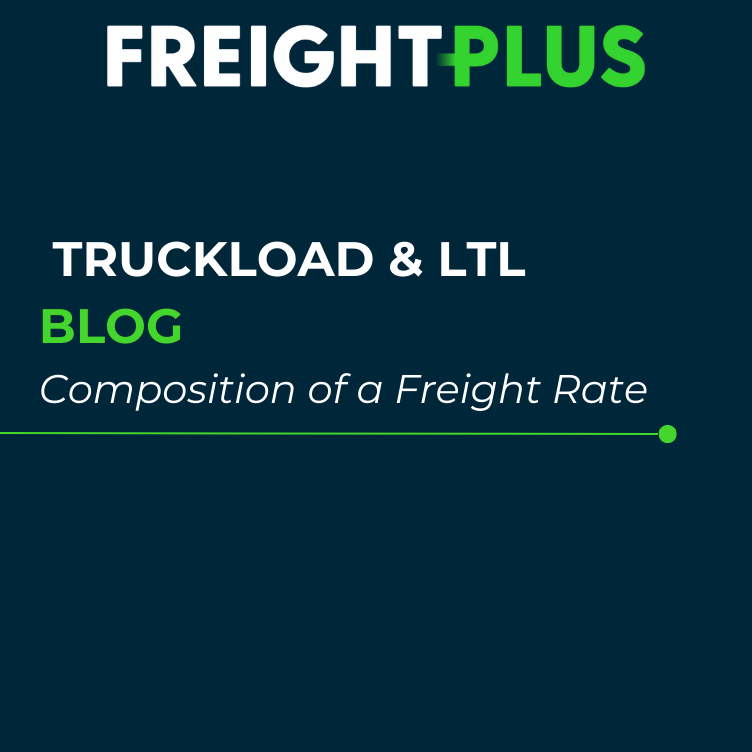When it comes to logistics and supply chain management, understanding freight rates is paramount. Whether you’re a seasoned logistics professional or a business owner looking to optimize your shipping strategies, comprehending how freight rates are composed can make a world of difference. At FreightPlus, we’re committed to empowering our clients with the knowledge and data they need to make informed decisions. Here we outline the intricacies of freight rates for two common shipping modes: Truckload (TL) and Less Than Truckload (LTL).
The Building Blocks of Freight Rates
At the heart of every freight rate calculation are a few key factors:
1. Distance and Mode
The first building block is the distance your freight needs to travel and the mode you choose for transportation. The choice between TL and LTL depends on factors like the volume and weight of your freight, as well as your specific delivery requirements. TL is typically used for larger shipments that can fill an entire truck, while LTL is ideal for smaller loads from multiple shippers sharing a truck.
2. Freight Characteristics
Next, the characteristics of your freight play a significant role. The weight, dimensions, and any special handling requirements will all impact your rate. Carriers classify different types of freight, so it’s important to understand how your goods fit into these categories.
Truckload (TL) Freight Rates
1. Distance-Based Pricing
For TL shipments, distance-based pricing is a common approach. Simply put, the farther your freight needs to travel, the higher the rate. Longer distances often result in increased costs due to the greater fuel consumption and operational expenses incurred by the carrier.
2. Full-Truck Utilization
One of the advantages of TL shipping is full-truck utilization. In a TL scenario, an entire truck is dedicated to a single shipper’s goods, allowing for a more efficient and streamlined transportation process. This optimization is reflected in TL rates, making it a cost-effective choice for large shipments.
3. Negotiated TL Rates
In many cases, businesses have the opportunity to negotiate customized TL rates with carriers. This means that you can work with the carrier to secure rates that are tailored to your specific needs. Key factors that can be leveraged during negotiations include shipment volume, the frequency of your shipments, and your relationship with the carrier.
Less Than Truckload (LTL) Freight Rates
1. Weight and Cubic Volume
Unlike TL, LTL rates are often based on both the weight and cubic volume of your freight. Since LTL carriers combine multiple shipments from different shippers into a single truck, the rate is calculated by considering the space and weight each shipment occupies.
2. Rate Classification
Another factor that influences LTL rates is the freight classification system, known as the National Motor Freight Classification (NMFC). This system classifies various commodities into categories, and the classification of your freight has a direct impact on the rate you’ll pay. Different commodities have different NMFC classifications, so it’s important to understand where your goods fit in this system.
3. Accessorial Charges
LTL shipments often come with accessorial charges. These are additional fees for services such as inside delivery, liftgate service, or waiting time. These extra services, while convenient, can increase the overall cost of your LTL shipments.
Comparing TL and LTL Rates
Understanding the differences between TL and LTL rates is crucial for optimizing your shipping strategy. The right choice depends on the unique needs of your business, freight, and delivery requirements. While TL is efficient for larger shipments and offers the benefits of full-truck utilization, LTL is a more cost-effective solution for smaller loads and businesses with sporadic shipping needs.
At FreightPlus, we’re here to help you make the right decision for your transportation needs. Our team of experts can assess your requirements and provide tailored solutions to ensure your freight reaches its destination efficiently and cost-effectively.
Conclusion
Understanding how freight rates are composed is a crucial step toward optimizing your shipping strategies. By decoding the intricacies of Truckload and Less Than Truckload rates, you can make informed decisions that positively impact your bottom line. The team at FreightPlus is dedicated to providing you with the knowledge and services you need to navigate the world of transportation with confidence. If you have any questions or need assistance in managing your transportation needs, don’t hesitate to reach out to us. We’re here to help you succeed in the world of logistics.
For Shippers
Are you looking to connect with a sales representative?



